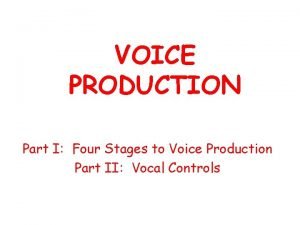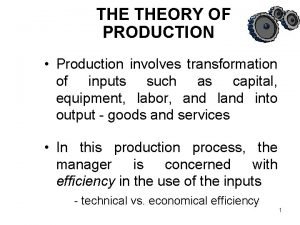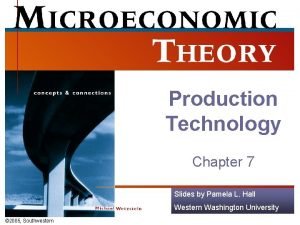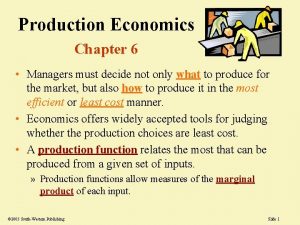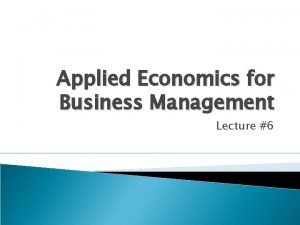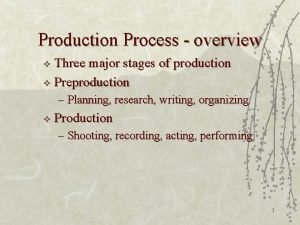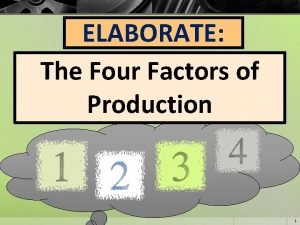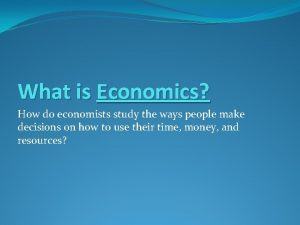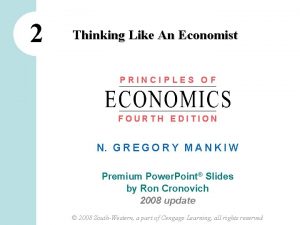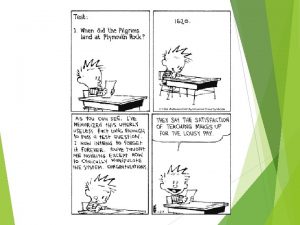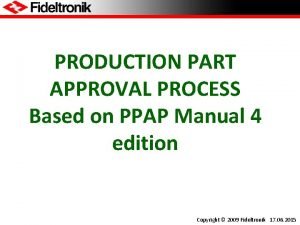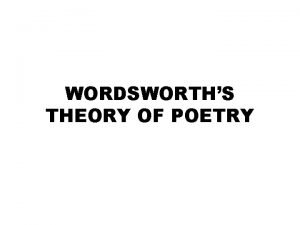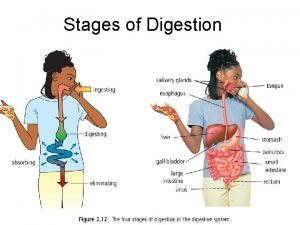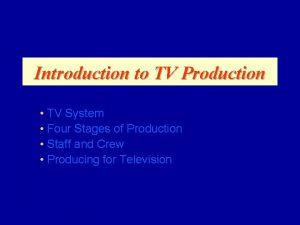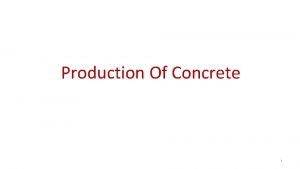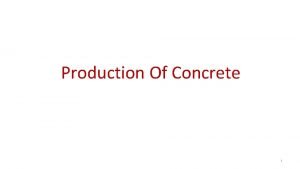VOICE PRODUCTION Part I Four Stages to Voice














- Slides: 14

VOICE PRODUCTION Part I: Four Stages to Voice Production Part II: Vocal Controls

Respiration Air goes into the lungs equaling air pressure outside body Diaphragm expands Chest cavity enlarges making a vacuum Control diaphragm to release air gradually.

Vibration Air passing over tightened vocal cords (folds in your laryunx) Size of larynx determines voice sound.

Resonance Amplification and enrichment of the voice. Resonators—throat, skull, sinuses, chest— produces louder, fuller tone.

Articulation Production of various speech sounds. Fixed articulators: teeth, hard palate Movable articulators: soft palate, tongue, jaw, lips Must use moveable articulators as precisely as possible.

Voice Q uality Rich—air Firm—relax throat and cords Resonant—use all w/o overuse

Vocal Controls 1. Volume—measure of how loud/soft your voice is Vary volume to add meaning to what you are saying.

2. Intensity—force of air out with diaphram. vary intensity to communicate emotions 3. Emphasis—varying volume and intensity makes a stronger impact.

4. Rate—speed at which you talk --fast: anger, confusion, excitement --slow: caution, fatigue, sincerity, hopelessness “The Pause” used between words, phrases, sentences to add drama and meaning. “The Frame” pause before and after a word or phrase Punctuation suggests pauses

5. Pitch—high or low sound of your voice like on a musical scale. • “Inflection”—altering pitch—helps keep audience listening Have a nice day!

• Articulation—clear, precise speaking “enunciation” --dropping endings (ed, ing) --running words together (Idoewannago) --substitute sounds (for—fer; to—tuh; athuletic, compuders) Lack education and manners Detracts from a speaker’s appeal

• Rubber baby buggy bumpers. • Shall she sea shells? • Ten tiny trumpters tunefully tuning their ten tiny trumpets. • She thrust three thousand thistles through the thick of her thumb.

• Red leather, yellow leather. • A box of biscuits, a box of mixed biscuits, and a biscuit mixer.

• Jeetyet? • Idoe wanna go. • Whudja halfer breakfuss smornin? • Hazzeol papern the cornera theard been pitup? • Jilluni are gonna star the car bar selves.
 Laryunx
Laryunx Post produksi adalah
Post produksi adalah Stages of production in film
Stages of production in film Involves transformation of
Involves transformation of Three stages of short run production function
Three stages of short run production function 3 stages of production
3 stages of production Three stages of production function
Three stages of production function 4 stages of production
4 stages of production 3 stages of production process
3 stages of production process 5 factors of production
5 factors of production Four factors of production
Four factors of production Four factors of production
Four factors of production Four factors of production
Four factors of production Significant production run
Significant production run William wordsworth poetry definition
William wordsworth poetry definition
